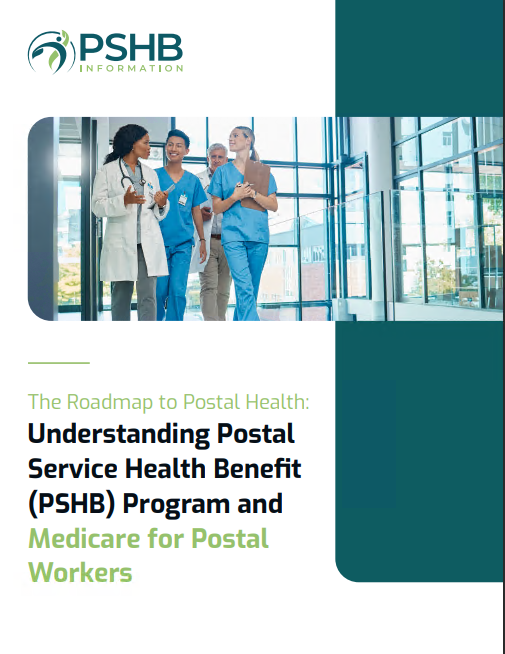Key Takeaways
-
Medicare Part C (Medicare Advantage) with PSHB in 2025 combines benefits from Medicare and Postal Service Health Benefits for a comprehensive approach to your healthcare needs.
-
Understanding how Medicare Part C interacts with PSHB can help you make informed choices that maximize your coverage and minimize out-of-pocket costs.
What Is Medicare Part C, and How Does It Work?
Medicare Part C, also known as Medicare Advantage, is an alternative way to receive your Medicare benefits. Unlike Original Medicare, Part C is administered through private insurance companies and often includes extra benefits like vision, dental, and hearing coverage. In 2025, Medicare Part C becomes even more significant for Postal Service Health Benefits (PSHB) enrollees, offering unique advantages when paired with your PSHB plan.
By integrating Medicare Part C with your PSHB coverage, you can enjoy enhanced benefits, but it’s essential to understand how the two work together. Medicare Part C plans often coordinate with employer-sponsored benefits like PSHB, ensuring smoother claims processes and potentially lower costs.
Coordinating Medicare Part C with PSHB: What You Need to Know
When you enroll in Medicare Part C as a PSHB participant, your healthcare coverage evolves. Medicare becomes the primary payer, covering most of your healthcare costs. PSHB then acts as the secondary payer, picking up additional expenses such as copayments, coinsurance, and deductibles not covered by Medicare.
This setup can reduce your financial burden significantly. For example, Medicare Part C might cover your primary care visits and hospital stays, while your PSHB plan helps offset prescription drug costs and other out-of-pocket expenses.
Enrollment and Eligibility
To make this integration work, you must first enroll in Medicare Parts A and B, as these are prerequisites for joining a Medicare Part C plan. For PSHB participants who turned 65 in 2025 or earlier, Medicare Part B enrollment is mandatory to maintain PSHB coverage. This dual enrollment ensures seamless coordination between Medicare Part C and PSHB benefits.
Advantages of Choosing Medicare Part C with PSHB in 2025
Pairing Medicare Part C with PSHB has distinct advantages:
Lower Out-of-Pocket Costs
With Medicare as the primary payer, you’ll often face lower deductibles and reduced coinsurance rates. PSHB fills in the gaps, reducing your overall financial exposure.
Simplified Claims Processing
Medicare Part C plans often handle claims directly with PSHB, minimizing paperwork and making the entire process more convenient.
Expanded Coverage Options
Medicare Part C plans frequently include additional benefits like fitness programs, telehealth services, and comprehensive dental or vision care, which enhance your PSHB plan’s coverage.
Prescription Drug Integration
Many Medicare Part C plans include Part D prescription drug coverage. Combined with PSHB, this ensures robust drug coverage with minimal out-of-pocket expenses, especially with the new $2,000 annual cap on prescription drug costs in 2025.
Things to Consider Before Enrolling in Medicare Part C
While Medicare Part C offers many advantages, it’s not a one-size-fits-all solution. Here’s what you should evaluate:
Network Restrictions
Most Medicare Part C plans use provider networks, meaning you’ll need to choose doctors and hospitals within the plan’s network to receive the best coverage. This may differ from the broader access you’re accustomed to under Original Medicare and PSHB.
Plan Differences
Each Medicare Part C plan varies in benefits, premiums, and cost-sharing requirements. Ensure the plan you choose aligns with your healthcare needs and integrates well with your PSHB benefits.
Enrollment Periods
Timing is crucial. Medicare Advantage plans follow specific enrollment periods, including:
-
Initial Enrollment Period (IEP): A seven-month window surrounding your 65th birthday.
-
Annual Enrollment Period (AEP): October 15 to December 7 each year.
-
Medicare Advantage Open Enrollment Period: January 1 to March 31 for making plan changes if needed.
For PSHB participants, changes to your PSHB coverage are generally limited to the Open Season period or qualifying life events.
2025’s Big Changes: Medicare and PSHB Integration
The 2025 healthcare landscape introduces new features and changes that enhance how Medicare and PSHB work together:
Out-of-Pocket Prescription Drug Cap
A $2,000 cap on annual out-of-pocket prescription drug costs under Medicare Part D provides financial relief for those with high medication expenses. This applies to many Medicare Part C plans as well.
Spread-Out Payment Options
The Medicare Prescription Payment Plan allows you to spread out-of-pocket drug costs over the calendar year, easing the financial burden of large, upfront expenses.
Enhanced PSHB Benefits
PSHB plans in 2025 often offer reduced deductibles, waived coinsurance, and better prescription drug integration for enrollees who also have Medicare Part C.
Steps to Take When Choosing Medicare Part C with PSHB
-
Assess Your Healthcare Needs: Review your medical history, current medications, and preferred healthcare providers.
-
Evaluate Costs: Compare premiums, deductibles, and copayments under different Medicare Part C plans and how they align with your PSHB coverage.
-
Verify Provider Networks: Ensure your preferred doctors and hospitals are in-network for your chosen plan.
-
Check Prescription Coverage: Confirm that your medications are included in the plan’s formulary and calculate how the $2,000 prescription drug cap affects you.
-
Enroll On Time: Use the appropriate enrollment periods to secure your coverage.
-
Coordinate Benefits: Inform your PSHB administrator about your Medicare enrollment to ensure seamless integration.
How to Maximize Your Coverage
To get the most out of your Medicare Part C and PSHB benefits, consider these tips:
Use Preventive Services
Medicare Part C plans often include preventive care at no additional cost. PSHB plans typically support these services, ensuring your health stays on track.
Review Your Plan Annually
Both Medicare and PSHB plans update their benefits yearly. Take time during Open Season to review changes and ensure your coverage meets your evolving needs.
Leverage Additional Benefits
Take full advantage of extra benefits like fitness memberships, telehealth options, and wellness programs that may be included in your Medicare Part C plan.
Coordinate Prescription Coverage
Utilize the $2,000 out-of-pocket drug cap and explore pharmacy savings programs available through your PSHB plan.
Common Questions About Medicare Part C and PSHB
Q: Can I switch to Medicare Part C mid-year?
A: Generally, changes to Medicare Part C can only be made during designated enrollment periods. Exceptions apply for special circumstances, like moving or losing other coverage.
Q: Do I need Medicare Part D if I have Medicare Part C and PSHB?
A: Most Medicare Part C plans include Part D prescription drug coverage, so separate enrollment in Part D is unnecessary. However, confirm this detail with your plan.
Q: Will my PSHB premiums change if I enroll in Medicare Part C?
A: Your PSHB premiums typically remain the same, but your out-of-pocket costs for healthcare services may decrease due to Medicare’s primary payer role.
Why Medicare Part C with PSHB Matters in 2025
Choosing Medicare Part C alongside your PSHB coverage in 2025 offers a more tailored healthcare experience, blending flexibility, cost-efficiency, and comprehensive benefits. With Medicare handling the bulk of your healthcare costs and PSHB filling in the gaps, you gain peace of mind knowing you’re covered from all angles.
As healthcare needs evolve, this coordinated approach ensures you have access to the services and support you need while keeping costs manageable. By carefully assessing your options and staying informed, you’ll be well-prepared to make the best choices for your health and financial well-being.
The Next Step Toward Better Coverage
Integrating Medicare Part C with your PSHB plan unlocks significant advantages, but it’s essential to stay proactive. Review your options, understand how these programs complement each other, and act during enrollment periods to secure the best possible coverage for your needs in 2025.









